This step by step diy woodworking project is about how to build an aquarium stand plans. If you want to learn more about building a wood stand for your aquarium, we recommend you to pay attention to the instructions described in the article. Check out the rest of the woodworking projects, as there are many plans to choose from and many ideas to use for your home.
Before starting the actual construction project, we recommend you to plan everything, as to save money and to keep the costs under control. Adjust the size and the design of the stand to suit your needs. In addition, we recommend you to invest in high-quality materials, such as pine, redwood or cedar, as they have a nice finish and are highly durable, especially in a humid environment.
If you don’t have a rich expertise in woodworking field, you should ask a friend to give you a hand with the project. There are many things that you could go wrong, so make sure you plan everything and invest in quality materials. Select the lumber with attention, making sure the components are perfectly straight and in a very good condition. Use a carpentry square to check if the corners are right-angled. See all my Premium Plans in the Shop.
Made from this plan
How to build an aquarium stand

Building an aquarium stand
Materials
- A – 4 pieces of 2×4 lumber – 29 1/2″ long LEGS
- B – 2 pieces of 2×4 lumber – 23 1/2″ long, 3 pieces – 9 1/4″ long 2xFRAME
- C – 1 piece of 3/4″ plywood – 30 1/2″ x 11 3/4″ long SHELF
- D – 2 pieces of 1×4 lumber – 22 1/4″ long, 1 piece – 12 1/4″ long TRIMS
- E – 2 pieces of 1×4 lumber – 22 1/4″ long, 1 piece – 32″ long TRIMS
- F – 1 pieces of 1/2″ plywood – 5 1/4″ x 22 1/4″ long, 1 piece – 22 1/4″ x 23 1/2″ long PANELS
- G – 2 pieces of 1×6 lumber – 22 1/4″ long, 2 pieces – 32″ long TOP TRIMS
- H – 1 pieces of 3/4″ plywood – 12 1/4″ x 30 1/2″ long TABLETOP
- 3 pieces of 2×4 lumber – 10 ft
- 2 pieces of 1×4 lumber – 8 ft
- 1 piece of 1×6 lumber – 10 ft
- 1 piece of 1/2″ plywood – 4’x4′
- 1 piece of 3/4″ plywood – 4’x4′
- 2 1/2″ screws
- 1 1/4″ screws
- glue, stain
- wood filler
Tools
- Safety gloves, glasses, Miter saw, jigsaw
- Chalk line, tape measure, spirit level, carpentry pencil
- Drill machinery and drill bits
Tips
- Apply several coats of wood stain to the wooden components
- Fill the holes with wood filler and smooth the surface
Time
- One Day
Related
Building am aquarium stand
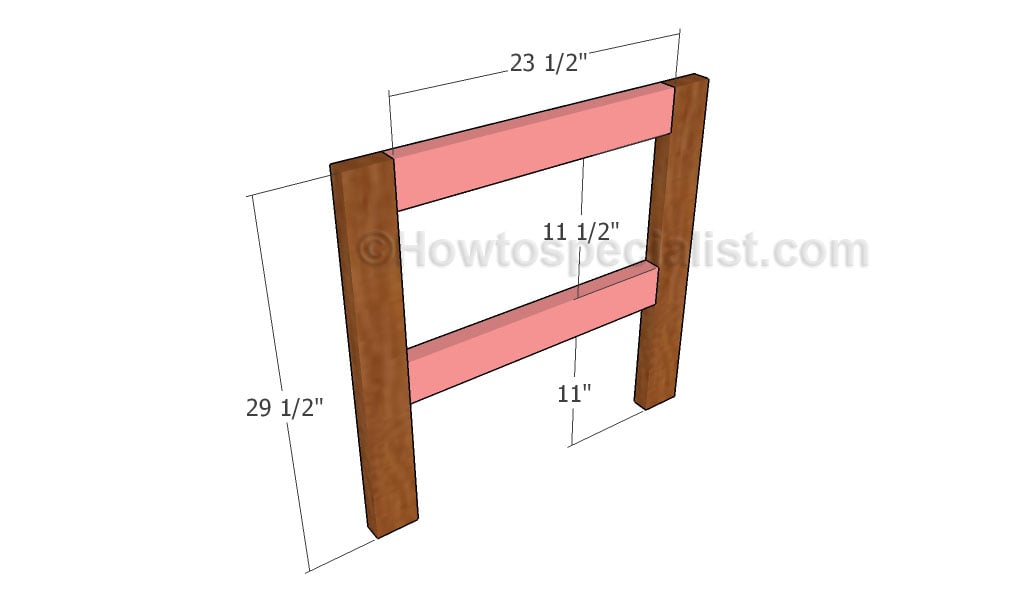
Building the faces of the stand
The first step of the woodworking project is to build the faces for the aquarium stand. As you can easily notice in the diagram, we recommend you to build the components out of 2×4 lumber. Take accurate measurements and drill pilot holes at both ends of the horizontal components. Insert 2 1/2″ screws after making sure the edges are flush and the corners are square. Add glue for a proper bond.

Building the frame of the stand
Next, you have to lock the faces of the stand together, as in the diagram. Cut the components out of 2×4 lumber and drill pocket holes at both ends. Fit the components between the faces and lock them together using 2 1/2″ screws. Make sure the corners are square and the edges flush.
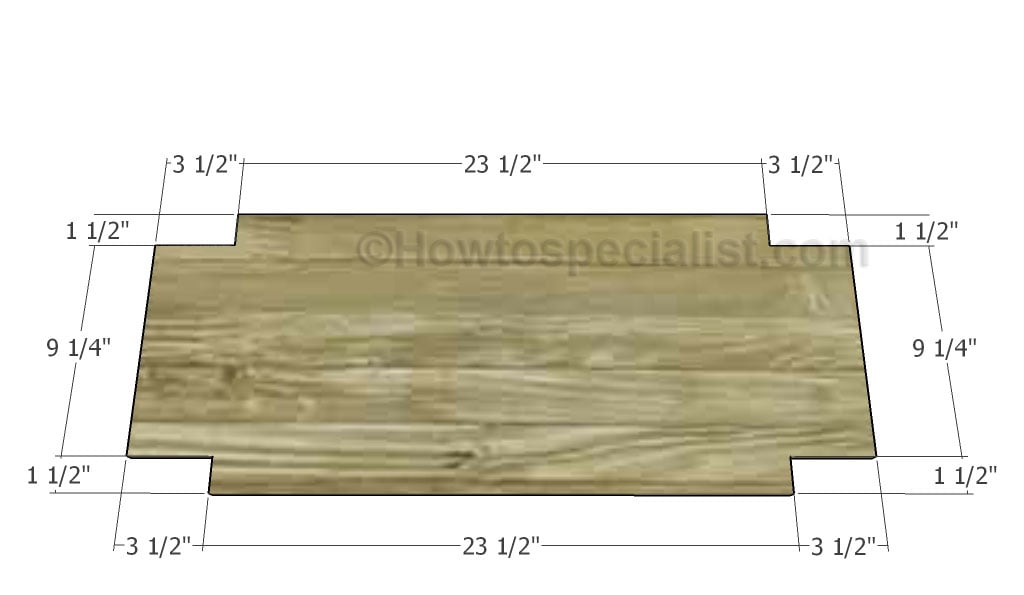
Building the shlelf
Build the bottom shelf out of 3/4″ plywood. Mark the cut lines on the sheet of plywood and get the job done with a circular saw. Smooth the edges and check if the notches are cut out properly.
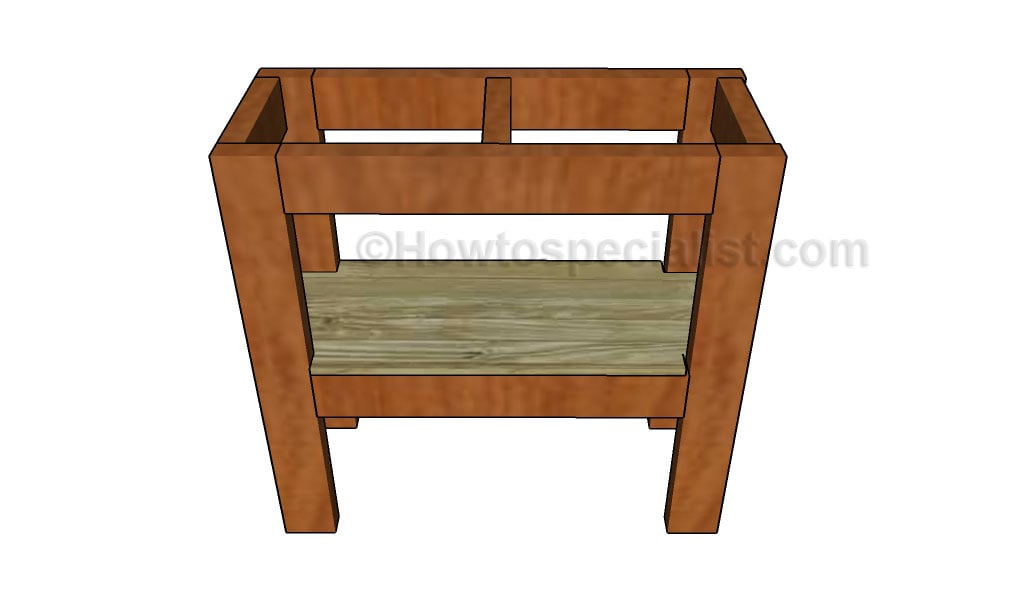
Attaching the shelf
Fit the shelf to the structure and lock it into position by using a few brad nails. You could add glue to enhance the bond of the components. In addition, we recommend you to make sure the edges are perfectly flush one with another.
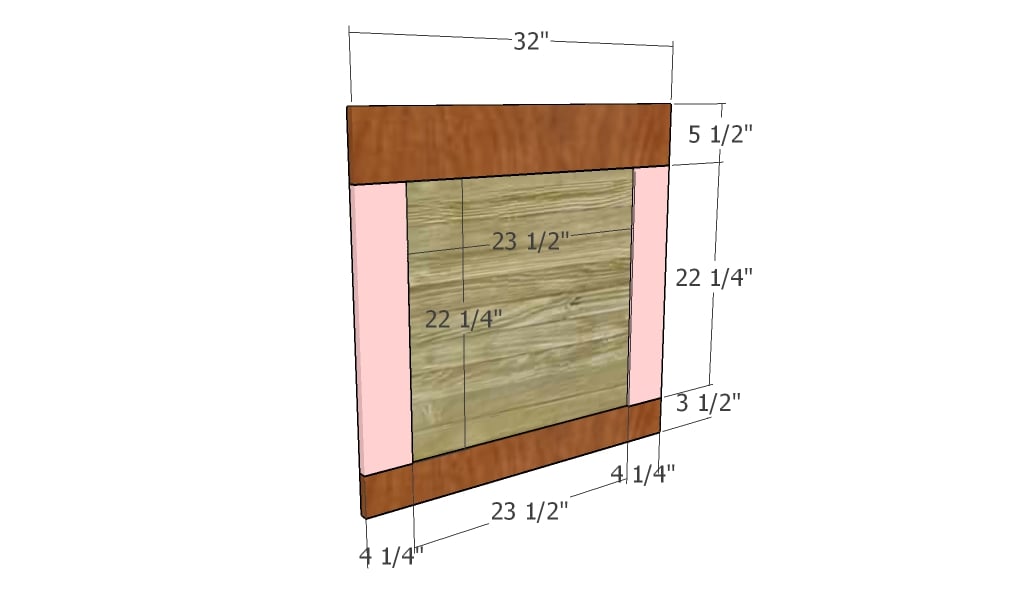
Building the front wall
Building the front wall for the aquarium stand is a straight forward process. Therefore, use lumber for the frame and 1/2″ plywood for the main panel. Drill pocket holes at both ends of the vertical supports and secure them to the top and bottom trims by using 1 1/4″ screws. Drill pocket holes along the edges of the plywood panel and secure it to the frame by using galvanized screws and glue.
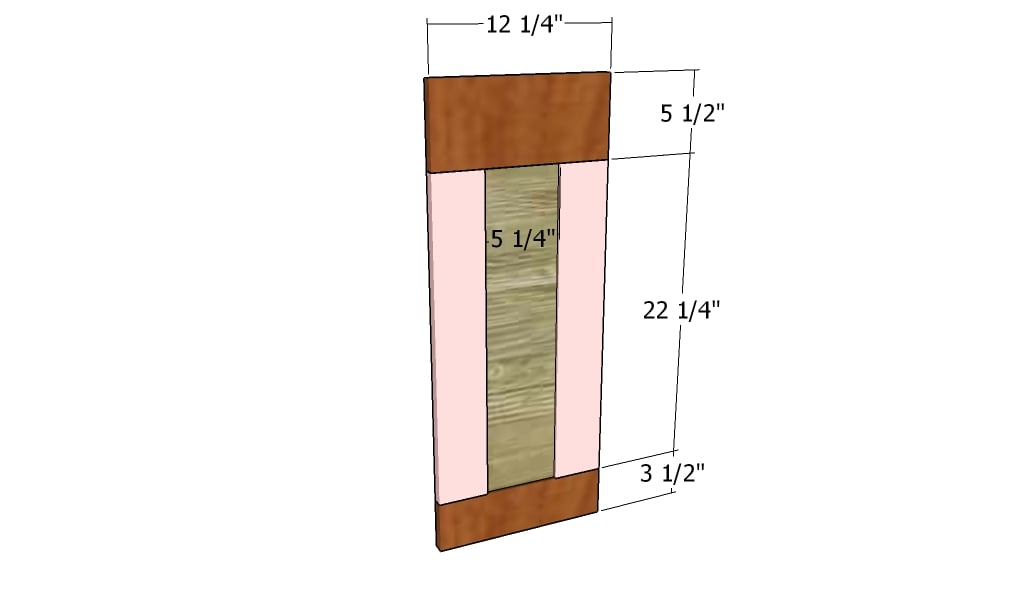
Building the side walls
Build the side walls in the same manner described above. Just make sure you adjust the size of the components as in the diagram. Check if the corners are square and make sure there are no gaps between the components.
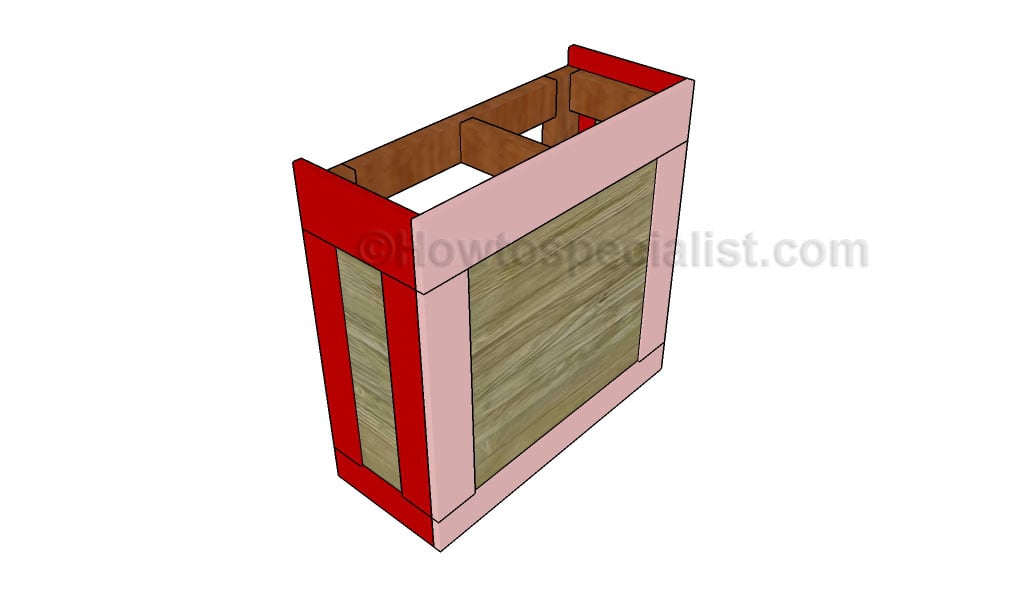
Attaching the exterior panels
Continue the project by attaching the exterior walls to the frame. Align the components with great care and secure the panels to the frame studs by using finishing nails. The edges should be perfectly flush for a professional result.
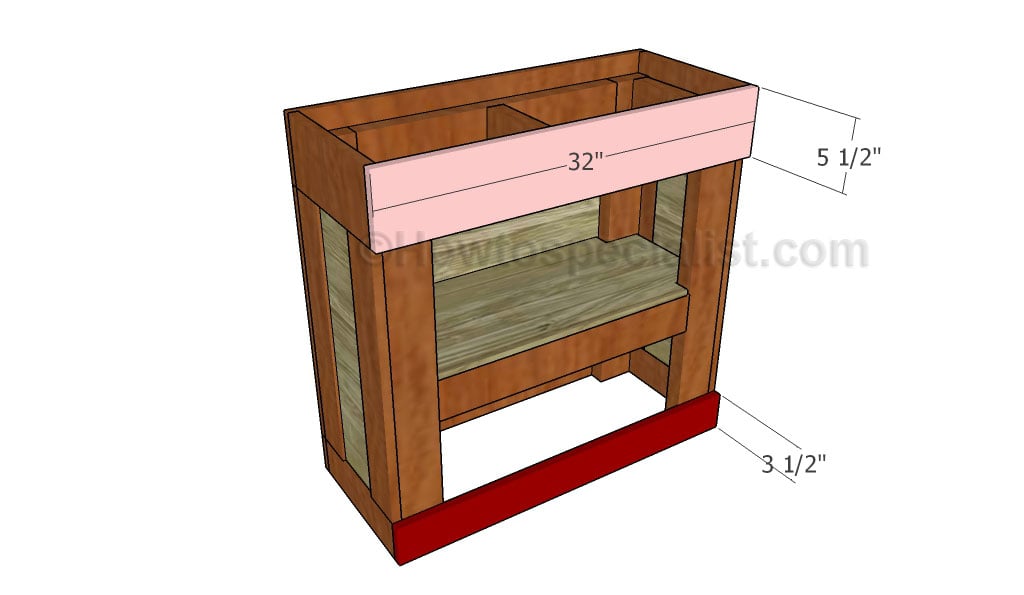
Fitting the back trims
In order to enhance the look of the aquarium stand, you have to attach the trims to the back of the structure, as shown in the diagram. Secure the trims to the structure using brad nails and glue.
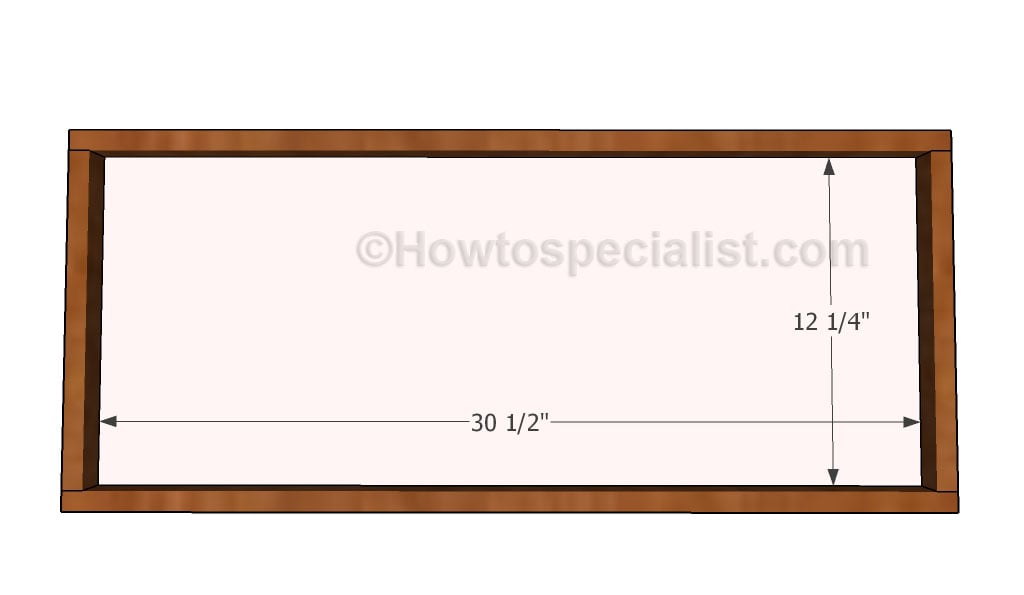
Attaching the top
One of the last steps of the project is to attach the top component to the stand, as described in the diagram. Cut the piece of plywood at the right dimensions and secure it to the cleats using brad nails and waterproof glue.

How to build an aquarium stand
Last but not least, we recommend you to take care of the finishing touches. Fill the holes with wood filler and let it to dry out for several hours. Afterwards, smooth the wooden surface with fine-grit sandpaper and vacuum the residues.
Thank you for reading our project about aquarium stand plans and we recommend you to check out the rest of the projects. Don’t forget to share our projects with your friends and LIKE us, by using the social media widgets. SUBSCRIBE if you want to be the first that gets our latest articles.
